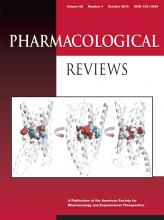A long field review was published by a group of international experts led by Ming-Wei Wang
A long field review entitled “Glucagon-Like Peptide-1 and Its Class B G Protein–Coupled Receptors: A Long March to Therapeutic Successes” (http://pharmrev.aspetjournals.org/content/68/4/954.full) was published online by Pharmacological Reviews, a world renowned scientific journal, on September 14, 2016 (EST, U.S.A.). This article was written by 14 authors from seven different countries (The Netherlands, U.K., Australia, Denmark, U.S.A., Korea and China) led by Professor Ming-Wei Wang (Shanghai Institute of Materia Medica, Chinese Academy of Sciences/School of Pharmacy, Fudan University). Sixty pages in length, containing more than 55,000 words and 546 references, this review took 2 years to prepare and comprehensively summarized the research achievements during the past 30 plus years in the area of glucagon-like peptide-1 and its receptors. Included in the author list are well-established research scientists (such as Dan Donnelly of U.K. and Patrick Sexton of Australia), respectable drug developers (such as Jesper Lau of Denmark and Laurence Miller of U.S.A.) and young talents whose academic reputation are on the rise (such as Chris de Graaf of The Netherlands, Denise Wootten of Australia and Dehua Yang of China). “The review is truly international with experts from both industry and academia, covering preclinical and clinical aspects, including very basic and structural information on the mechanism(s) of action of a number of peptides, drugs or drug candidates. The indications range from type 2 diabetes to obesity and other forms of insulin dysregulation. It is a major piece, well written and documented. The authors have to be commended, especially Professor Ming-Wei Wang, for his efforts in bringing together this team of experts”, commented by one of the referees of the paper.
Glucagon-like peptide-1 is the most effective incretin that promotes insulin release. It regulates glucose homeostasis via stimulating insulin secretion, suppressing glucagon release, slowing gastric empty and inhibiting food intake. Glucagon-like peptide-1 receptor is a member of class B G protein-coupled receptor family that plays a key role in the pathogenesis of type diabetes and obesity. It is thus a well-recognized target for anti-diabetic agents. There are several marketed glucagon-like peptide-1 mimicking drugs at present such as Exenatide and Liraglutide. The research team led by Professor Ming-Wei Wang has engaged in structural and functional studies on glucagon-like peptide-1 and its receptors for over 14 years where they made some important discoveries in this field.
Designed and organized by Professor Ming-Wei Wang, this article presents both historic aspects and current status of glucagon-like peptide-1 and its receptors in a systemic and comprehensive manner, in terms of discovery processes, physiological functions, molecular structures, signaling pathways, mechanisms of action, research aaproaches, drug development and clinical efficacies. It is of high value for the determination of glucagon-like peptide-1 receptor structure, elucidation of its functions and drug discovery based on this target.
About the cover: Homology model of GLP-1R illustrating the relative position of key residues involved in the receptor signaling bias. See the article by Wang et al. doi:10.1124/pr.115.011395.

